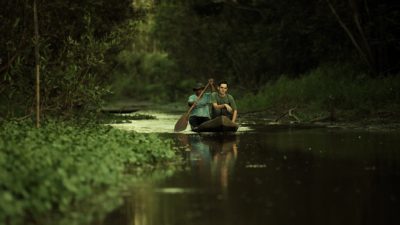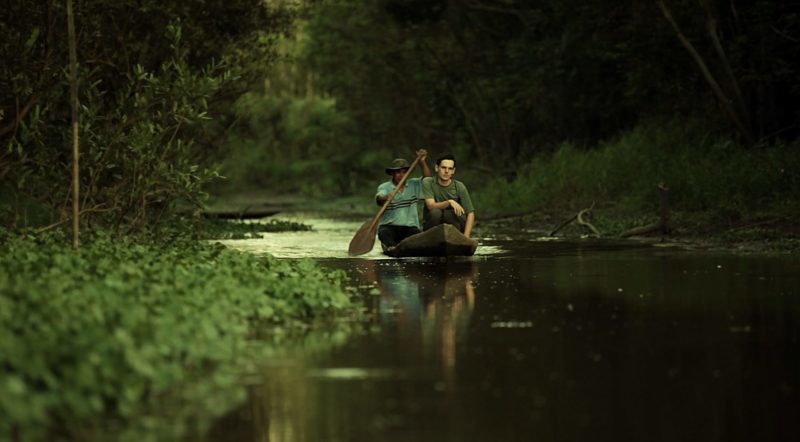INTERVIEW: Raz Degan heads into Amazon to understand effects of Ayahuasca

The Last Shaman, which recently opened in theaters, follows a young man struggling with depression who heads to the Amazon to “explore the healing powers of the powerful drug Ayahuasca.” What director Raz Degan discovers about this sacred plant is both revealing and shocking. The documentary ultimately proves to be a meditation on spirituality, commercialization, medicine and mental health.
Degan is a former actor in Italy who was inspired to make The Last Shaman after an experience he had with the drug. “This movie was quite a task,” Degan said recently in a phone interview. “What happened was I used to be an actor, and while I was finishing a movie … I decided to go for a walkabout. So after about four months on the Silk Road by myself, altitudes running anywhere from 3,000 to 4,000 to 5,000 meters, I got kind of like bronchitis somewhere on the border of Tibet and Nepal.”
That bronchitis led him to Goa, India, and a shaman who gave Degan some Ayahuasca, a tribal plant medicine with hallucinogenic properties. In press notes for the movie, Degan states that he was seeking an end to his ailment and some “clarity” about what to do next with his career and life.
He drank the Ayahuasca tea for six nights and explored many “hidden doors, hidden closets.”
“Once that happened, I managed to release some trauma, and what I was carrying on without even knowing that I was carrying on,” he said. “I felt a lightness that was actually a spiritual lightness.”
These personal experiences led him to start exploring the Amazon. “I’m going to go to the jungle and see if I can find something out there in Peru that really convinces that there’s a story to tell,” he said. “I met a lot of shaman, apprentices, patients. One of them was James, the subject of the [film] who wasn’t initially going to be the hero of the movie.”
UNDERSTANDING JAMES
In the press notes for the film, Degan said James had all the ingredients he was looking for to tell a story about Ayahuasca. He was a character who suffered from depression and could speak to the debate between eastern and western medicines. James allowed Degan to “penetrate his most intimate experiences on a physical, emotional and spiritual level.”
As Degan began digging deeper and following James, the filmmaker also realized there was a dark side, that the medicine was being commercialized and made into a “monster.”
“How do I make a story about something which is sacred?” he asked. “How do I not destroy its environment? Its setting? How do I not pull in more googled-eyed kids who want to go take it in Peru in the hands of lunatics?”
He reasoned that “the Ayahuasca had an effect on me, but it was also clear to me that we are having an effect on the Ayahuasca. It’s not just what the Ayahuasca does to me, but it’s what I do. … I’m just a filmmaker. I did what I had to do and stayed true to my story.”
To be sure, Ayahuasca is a controversial drug that has been written about and debated in many media and health outlets. The New Yorker ran a piece about the trend last year. Ditto for The New York Times, which published “Ayahuasca: A Strong Cup of Tea” in 2014. The National Institute on Drug Abuse lists the drug as a hallucinogen alongside LSD and peyote. The institute states that use of Ayahuasca can cause increased blood pressure, severe vomiting and a profoundly altered state of awareness and perceptions of otherworldly imagery.
TREKKING IN THE AMAZON
The actual filmmaking was difficult. For 80 percent of the project, Degan was the only camera operator. He wanted to be close to his subject, so he took on most of the technical responsibilities. He shot approximately 500 hours for the 80-minute documentary.
“It took more than two years and 10 editors to get to the crux of the matter,” he said. “Then in the Amazon, you have a lot of rain, humidity and fog. Anything can come in your lens. There’s nowhere to charge the battery. Everything is wet. You have to open the lenses quite often to get rid of the humidity. Things would get watered down and then have to get dried. It goes from very, very hot to very humid to very dry to very wet. I mean, it’s not a five-star hotel. You stay for months sometimes sleeping without even a mattress, so you’ve got to be ready to go and do those kinds of things and not have them be the reason why you don’t achieve your goal.”
He added: “Sometimes you go down the rabbit hole, and there’s nothing there. You never really know what you get. Things they grow by themselves. That’s why I love documentary filmmaking.”
By John Soltes / Publisher / John@HollywoodSoapbox.com
The Last Shaman, directed by Raz Degan, is currently playing in movie theaters. Click here for more information.

